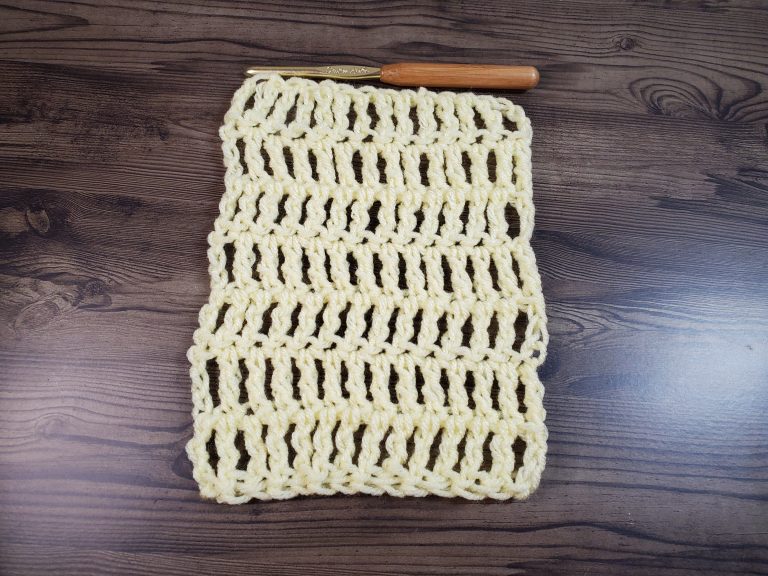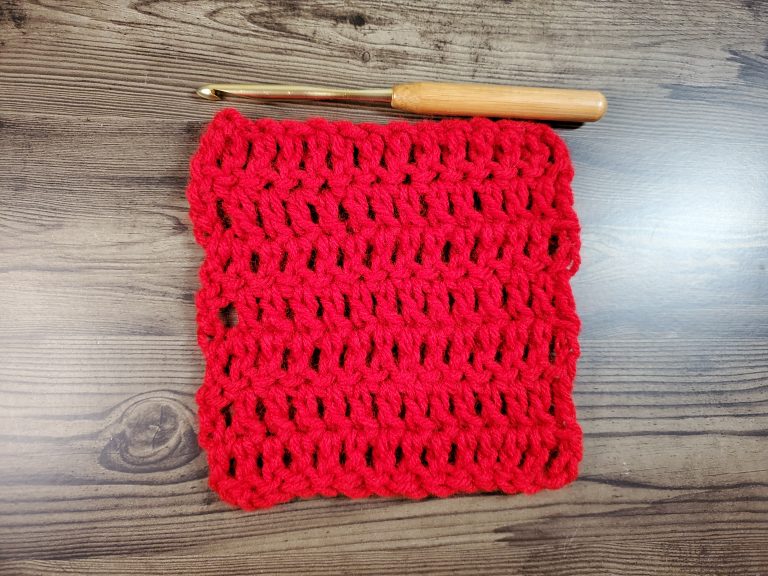Yarn Types – A Basic Guide for Beginners
Choosing the right yarn for a project can make a huge impact on how well your project turns out. Being educated on the differences between types of yarn will help you make the right decision when it comes to choosing the right yarn types for your creation.
There are 3 main characteristics you should look into when deciding on yarn type: weight, material and colorway.
Yarn Types by Weight
Yarn weight generally refers to the thickness of the yarn. The scale starts with 0 and goes up from there.
Crochet thread, the thinnest of the yarns, is usually used for accessories, home decor, or for adding borders to fleece blankets.
Getting into slightly thicker yarn types, you have fingering, sport weight and DK yarns. These are all considered light weight yarns, and are typically used for things such as filet crochet, socks, hair accessories, clothing and bags.
The next step up is the most commonly used weight of yarn, worsted, aran or medium weight yarn. This is the yarn you most often find in the yarn aisles of your local big box stores. It is used mainly for blankets, sweaters, amigurumi (stuffed animals or toys), bags, accessories and home decor.
Bulky yarn is fairly thick yarn typically used for blankets, baskets and home decor.
There are also specialty yarn types. These yarns don’t fall into the main categories listed above. There is scrubby yarn, which is used to make dish scrubbies or sponges. Fashion yarn, which is yarn that has a texture, baubles, or extra features that make it more interesting than a straight thread. And t-shirt yarn, which is exactly what it sounds like it is, long strips of t-shirt like fabric. You can even make your own t-shirt yarn out of your own t-shirts. T-shirt yarn works great for making things such as rugs, because the fabric they make is very soft.
Yarn Types by Material
Yarn can be made from both natural and synthetic fibers. The most common natural fibers used to make yarn are cotton & wool.
Wool to make yarn can be obtained from various animals, such as sheep, alpaca, or other animals. Wool is typically a medium to thick yarn, and is slightly more expensive than those made from synthetic fibers. It is a good choice for when you are making a blanket or winter gear, such as sweaters, hats or scarves.
Cotton, spun from the cotton plant, is typically a lighter or dk weight yarn, though you can find them made thicker. Again, these yarns tend to be more expensive than their synthetic partners, but there is a very good use for them. I absolutely love using cotton yarn to make dishcloths, coasters, face scrubbies and can huggers. They’re absorbent and work very well for these projects. You can also combine cotton yarns with scrubby yarns to make dishcloths with a scrubbing texture. I’ve made quite a few sponges this way, and they work quite well! And they’re washable and reusable! An absolute win for the environment.
Synthetic yarns, such as acrylic, nylon and polyester are slightly cheaper than the natural fibers. Acrylic worsted weight yarn is typically what you are going to find in the yarn aisle of your local stores. It seems to be the cheapest and most commonly used yarn. If you’re just getting started, and looking for a skein to practice with, this is what I recommend using. This yarn is inexpensive and easy to work with.
Colorway
Another thing to pay attention to when purchasing your yarn for your fabric is the color way. Yarn comes in various colorways, and choosing the right one can have a huge impact on your project. There are solid yarns, variegated yarns, striped yarns and ombre yarns.
Solid yarns are good for projects where you want to have control over your colors, or where you have pieces that need to be specific colors when you put them together. For example, amigurumi or blankets that are made from blocks and sewn together are good projects for using solid yarns.
Variegated yarns are yarns where there are varying color changes within the yarns. These yarns are great for projects where you’re going to want some dimension or variations. I love using these for washcloths, scarves, and hats.
Striped yarns are very similar to variegated yarns. There are color changes throughout the yarns, but these changes come in longer lengths than the variegated yarns. Ombre yarns are similar to the striped yarns, except the color changes are more subtle, going from a lighter to a darker shade (or vice versa) of the same color within the skein.
The last two things you need to look at when making a yarn type selection are both written on the label of the skein. You’re going to need to make sure that you have the right size hook for the yarn. This will typically be on the back side of the label. You’re also going to want to make sure that the yarn you are buying is all from the same dye lot. A blue from one dye lot may be slightly different from the exact same blue from another dye lot, because the colors may mix slightly different. Again, you can usually find the dye lot on the back side of the label.
If you’re just starting out, this may have been a lot of information to take in. Don’t worry about memorizing all of this. Most patterns will tell you what yarns were used to create the original project. You can worry about making different yarn choices as you get more comfortable with the craft. The main thing a beginner should take away from this is that there are choices in material, weight and colors. Just take a walk down the aisle in a craft store, and you’ll be amazed at how much you can learn. And while you’re there, grab a skein of basic acrylic yarn, and a hook. I want to teach you how to crochet beautiful projects!
Jump on over to my first tutorial on the Crochet Chain Stitch once you have decided to begin!






